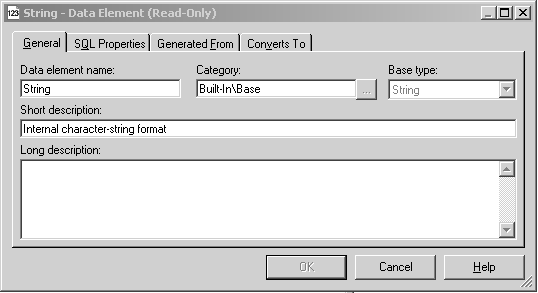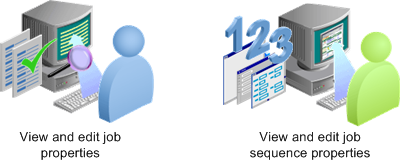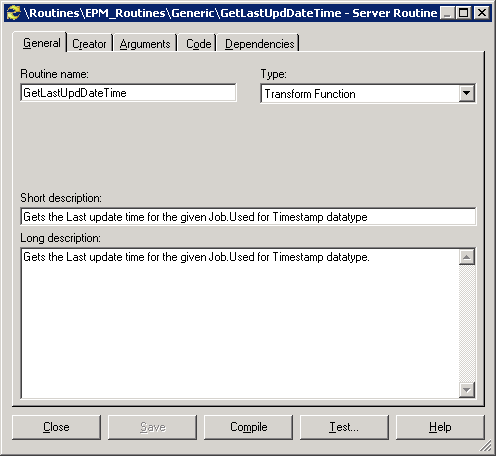Editing Object Properties
Object properties consist of descriptive information and other types of information, depending on the object type. Using DataStage Designer you can:
Image: DataStage Designer - Object Properties
This graphic illustrates the tasks that can be performed using object properties in the DataStage Designer.

The following is an example of an object property for the String data element:
Image: Object Property - String Data Element
This example illustrates the Object Property - String Data Element.

Editing Job and Job Sequence Properties
DataStage Designer enables you to:
Image: DataStage Designer - Job/Job Sequence Properties
This graphic illustrates the tasks that can be performed for job and job sequence properties in the DataStage designer.

The following is an example of a server job property:
Image: Server Job Properties
This example illustrates the Server Job Properties.

Editing Server Routines
You can create, edit, or view server routines using the Routine window. Argument names in built-in routines cannot be changed.
Image: Server Routine Properties
This example illustrates the Server Routine Properties.

The following components are classified as routines:
Transform functions.
Before/after subroutines.
Custom UniVerse functions.
ActiveX (OLE) functions.
Editing the Stage Type
The Stage Type category in the project tree contains all the stage types that you can use in your jobs. Properties of WebSphere DataStage's pre-built stages are read-only.
Image: DRS Stage Type Properties
This example illustrates the DRS Stage Type Properties.

You can create or edit object properties for the following stage types:
Custom Plug-in Stages.
Parallel Job Custom Stages.
DataStage Designer enables you to create and register plug-in stages to perform specific tasks that the built-in stages do not support. You need to register custom plug-in stages before you can use them. In addition, DataStage Designer enables you to create custom parallel stage types.
Specifying Table Definitions
DataStage Designer enables you to:
Image: DataStage Designer - Table Definitions
This graphic illustrates the tasks that can be performed for table definitions in the DataStage Designer.

Table definitions:
Specify the data structure used by each stage in a DataStage job.
Are stored in the repository and are shared by all jobs in a project.
Are required for each data source and data target.
Can be imported, manually created, or edited.